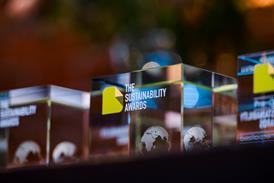
A quarter of a century into the new Millennium, what does 2025 have in store for the paper packaging industry? According to Neil Osment, MD of packaging market research company NOA, it all comes down to the five ‘Ps’.
At the start of a new year, it’s always worth exploring what the months ahead might bring. In 2025, with the backdrop of recent elections, rising costs, the ongoing shift away from plastics, and continued conflict in Europe, the outlook for the paper packaging sector is especially intriguing.
So, we’ve been looking at what factors may affect the paper packaging sector and come up with the five Ps.
The first ‘P’ is for Peace - though it may come with a question mark. President Trump is set to take office, vowing to end the war in Ukraine within 24 hours. While such a claim may warrant scepticism, experts suggest that reduced US involvement could hasten the conflict’s resolution and help this area move to a more normal, peaceful life again.
Similarly, tensions in the Middle East may begin to ease, especially following the fall of the Syrian regime last year. With fewer resources devoted to warfare, global focus may shift to rebuilding Ukraine and revitalising economies, including in the US and Europe. Such stability should positively encourage increased demand for goods and in turn, impact the paper packaging industry.
Leading on from this is our second ‘P’ - Prohibitive tariffs. President-Elect Trump has expressed a preference for tariffs to encourage Americans to purchase domestic goods. However, Europe and Scandinavia’s production of certain paper products, especially premium white and coloured paper, remains unmatched, leaving US businesses dependent on these imports.
Consequently, we expect high tariffs on paper packaging to be unwise and unlikely, as alternatives simply don’t exist.
And on to our third ‘P’ - Papertarians – the word that describes people who actively choose paper-based products over alternatives.
This growing demographic, particularly among Millennials and Gen Z, prioritises sustainability and supports brands that use renewable, farmed resources like paper. Their preferences are reshaping demand, pushing more companies to adopt paper-based packaging solutions (aka ‘Paperisation’!).
Now on to Pragmatism. We are seeing in Europe, and in particular the UK, the rapid introduction of hybrid packaging, which is largely paper-based but includes around 15% plastic (usually in the form of a polyethylene or ‘PE’ barrier liner).
Why is this pragmatic? Because it represents a transitional step towards meeting the European Packaging and Packaging Waste Regulation (PPWR), which limits plastic content in packaging to 5% or less. Achieving this target requires incremental progress, and the current 15% hybrid solutions that we are starting to see are a key milestone.
Finally to our last ‘P’ – the Packaging evolution. By the end of 2025, we believe these 15% plastic containers will start to be replaced by ones beginning to meet PPWR’s legal requirements, of 5% or less, using a plastic coating material or even one that is plastic-free.
The speed of development from packaging technologists is remarkable. They are working hard to meet the demands of PPWR and of Papertarians to eradicate or reduce the plastic content of many packaging formats.
For example, NotPla (https://www.notpla.com/food-containers) has created hybrid packaging that uses paper with a natural, seaweed-based coating, which are being adopted by JustEat and at Wimbledon.
For the NOA team, we’ll be producing a new report in 2025 based on a deep dive into the ever-changing hybrid pack market. Watch this space for more details on how these trends will shape the future of the paper packaging industry.
If you liked this story, you might also enjoy:
The ultimate guide to the Packaging and Packaging Waste Regulation in 2024
How are the top brands progressing on packaging sustainability?
Sustainable Innovation Report 2024: Current trends and future priorities
Everything you need to know about global plastic sustainability regulation


















No comments yet